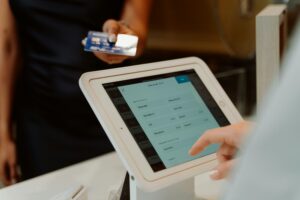Smart Terminal Showdown: Countertop vs Mobile vs Virtual - Which Fits Your Workflow?
 Modern “smart terminals” are far more than card readers. They are mini-computers with touchscreens, apps, and cloud connections that help you ring up sales, track inventory, and accept every payment type from chip cards to digital wallets. Yet not all smart terminals look alike.
Modern “smart terminals” are far more than card readers. They are mini-computers with touchscreens, apps, and cloud connections that help you ring up sales, track inventory, and accept every payment type from chip cards to digital wallets. Yet not all smart terminals look alike.
Should you plant a sturdy countertop unit at the register, arm staff with handheld devices, or process everything through a browser-based virtual terminal? In this guide we break down the strengths, trade-offs, and real-world costs of each option so you can decide with confidence.
1. What Counts as a Smart Terminal Today?
Smart terminal: A payment device that runs on an open or semi-open operating system (usually Android), connects to the internet, hosts merchant apps, and supports contactless, chip, and magstripe transactions. It is “smart” because software, not hard-wired logic, drives most features.
Key features you should expect:
-
Touchscreen interface
-
Built-in receipt printer or wireless print pairing
-
EMV chip, NFC (tap), and magstripe card acceptance
-
Wi-Fi and/or cellular data connectivity
-
App marketplace or downloadable modules for loyalty, tipping, and reporting
Traditional countertop credit card machines with tiny monochrome screens do not fit this definition. They swipe, dip, or tap but cannot run extra apps or sync data in real time.
2. Countertop Smart Terminals
Typical hardware and connectivity
Most countertop units resemble a small tablet anchored to a weighted base with an integrated printer and cable management. Ethernet is common for stability, with Wi-Fi as a backup.
Strengths
-
Rock-solid internet connection and continuous power
-
Full-size screen for easy order entry and on-screen tipping
-
Multiple ports for cash drawers, barcode scanners, and customer displays
-
Consistent footprint helps with quick staff training
Limitations
-
Fixed location means lines form at the counter
-
Requires surge-protected power and network; outages halt checkout
-
Moving or adding stations involves wiring work
Ideal environments
Full-service restaurants, medical or dental offices, auto repair shops—any place where customers naturally walk to a desk or host stand.
3. Mobile Smart Terminals
Form factors
-
Handheld all-in-ones: Phone-sized units with built-in printer and scanner
-
Phone-plus-reader combos: Clip-on or Bluetooth readers that pair with an iOS or Android phone you already own
Strengths
-
Bust long lines by taking payments tableside or curbside
-
Perfect for outdoor festivals, pop-up shops, or delivery crews
-
Instant digital receipts via email or text
-
Lets staff stay on the floor to upsell rather than behind the counter
Limitations
-
Battery life varies; hot-swap docks recommended for long shifts
-
Screens and ports are more exposed to drops and spills
-
Cellular data plans add a few dollars per month per device
Ideal environments
Quick-service restaurants, food trucks, home-service contractors, and event vendors who value speed and portability.
4. Virtual Terminals and Payment Links
A virtual terminal is a secure web page where you key in card data from any internet-connected device. No dedicated hardware is required. You can also email or text payment links so customers complete transactions themselves.
Strengths
-
Zero countertop clutter and no device costs
-
Works anywhere—perfect for remote billing or phone orders
-
Great fallback when physical terminals fail
Limitations
-
Card-not-present (CNP) interchange rates are higher than chip or tap rates
-
Manual data entry slows throughput and invites typos
-
Extra fraud-prevention steps (AVS, CVV) are mandatory
Ideal environments
Professional services, wholesalers, subscription or invoice-based businesses—any merchant who rarely sees the cardholder face to face.
(For a deep dive on how virtual terminals work, see Understanding Virtual Terminals: A Guide for Businesses.)
5. Decision Matrix: Matching Terminals to Real-World Workflows
| Workflow priority | Best fit | Why it wins |
|---|---|---|
| Line speed at counter | Countertop | Large screen and wired connection handle high volume |
| Tableside service | Mobile | Accepts tips and signatures right at the table |
| Remote or phone billing | Virtual | No hardware, accepts card data from anywhere |
| Seasonal pop-ups | Mobile | Quick to deploy, no wiring needed |
| Hybrid retail + delivery | Combo | Countertop in-store, mobile for curbside, virtual for invoices |
Hybrid setups
Many merchants use two or even all three terminal types. For example, a garden center may run countertop registers inside, equip staff with handhelds in outdoor aisles, and send payment links for landscaper invoices. Because each device syncs to the same cloud dashboard, reporting stays unified.
6. Cost, Security, and Compliance Factors
Up-front vs recurring costs
| Cost element | Countertop | Mobile | Virtual |
|---|---|---|---|
| Hardware purchase | $300–$900 per unit | $200–$600 per unit | $0 |
| Monthly software fee | $15–$40 | $15–$40 | $15–$30 |
| Data plan | Not needed (Ethernet) | $10–$15 | Not needed |
PCI DSS obligations
PCI DSS (Payment Card Industry Data Security Standard) sets rules for handling card data. Smart terminals certified as PCI PTS encrypt cardholder data on the device. You still need annual SAQ (self-assessment questionnaire) filings, but countertop and mobile terminals lower your SAQ scope compared with virtual key-entry, which counts as CNP and requires extra controls.
Fraud-prevention tools
-
Point-to-point encryption (P2PE) on countertop and mobile devices
-
Tokenization that replaces the card number with a random token
-
AVS (address verification) and CVV checks for virtual terminal entries
-
Optional 3-D Secure on payment links to shift liability
(For more ways to lock down payments, read Fraud Prevention Strategies for Small Businesses.)
7. Implementation Tips and How AdaptMS Can Help
- Start with a pilot: Roll out 1 or 2 devices in a low-risk location before a full swap.
- Train staff in 15-minute micro-sessions: Touchscreen layouts mimic smartphones, so learning curves are short.
- Integrate with your POS and accounting: Our team maps sales data to QuickBooks, Xero, and popular retail or restaurant platforms.
- Plan for support: AdaptMS monitors terminals 24/7 and ships same-day replacements when required.
- Scale gradually: Add mobile units for peak season, or layer virtual invoicing onto your existing countertop setup… whatever matches your cash-flow rhythm.
Ready for the right terminal mix?
We tailor hardware bundles, data plans, and service levels to your unique workflow. Questions? Contact our sales team today and let’s build a payment strategy that grows with you.
